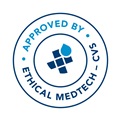Alessandro Bucci
ASUR Marche
Italy
Title: Drug induced sleep endoscopy in persistent pediatric osa after adenotonsillectomy. literature review and our personal experience: a preliminary study
Biography
Biography: Alessandro Bucci
Abstract
OSA (Obstructive Sleep Apnea) in children has been recognized as a significant disorder warranting evaluation and management. The prevalence of OSAS in pediatric population is 1–4% and is linked to a number of health-related issues and behavioral problems such as daytime sleepiness, cardiovascular problems, poor growth, hyperactivity, enuresis, academic difficulties and attention issues. Even those no universally accepted criteria have been developed for its diagnosis and treatment. Adenotonsillar hypertrophy is the primary cause of OSA in children but tonsillectomy and adenoidectomy (T&A) are not always resolutive. Studies have shown that 15–20% of children will have persistent OSA due to sites of obstruction in the airway other than the tonsils and adenoids. Identifying these areas in the past has been problematic and therefore, therapy for OSA in children who have failed adenotonsillectomy has often been unsatisfactory. DISE was performed on all children with persistent OSA after T&A. Multilevel upper-airway obstruction was identified and described (sites, pattern and degree of airway obstruction) in the majority of patients, most commonly related to tongue base obstruction, adenoid regrowth, septal deviation and/or inferior turbinate hypertrophy. Findings from DISE suggest that multiple factors contribute to airway obstruction in persistent OSA after T&A. DISE is a dynamic and safe procedure, easily practicable, valid and reliable. It provides clinical information not available by routine clinical inspection alone. DISE permits to visualize the anatomical sites of snoring or apneas and guides the design of a tailor-made treatment plan in individual cases.

